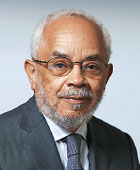End-of-Year Rituals and New Year Promises
I have always liked public and private rituals that mark the transition from one calendar year to another. In these moments of ceremony, I like to reflect on my trespasses and transgressions. If some humility sets in, I acknowledge having fallen short. With the arrival of the new year, a secular advent season arrives, and I formulate promises for the future and a new beginning of sorts. It may be a good time to change bad habits and start afresh with hope and a commitment to treat others with more grace and compassion. In my case, the events that mark interyear transitions have often been connected to religious rituals such as the traditional church services held on December 24 and 31. The former fostered a sense of community through the singing of hymns and carols we all knew by heart. As for the latter, what we called the watch-night service, old-timers loved bragging to friends about having witnessed timepieces move past midnight. “Last night I watched the New Year come in, man. You should have heard those tenors at All Souls Church.” Mentioning the singing or the sermon verified the claim’s truth and deepened its solemn character. Of course, that did not always guarantee faithful execution of full-throated New Year promises.
One should expect that end-of-year happenings come in a variety of forms. I have friends who look forward to attending the December 31 performance by the Alvin Ailey dance troupe in New York City. They have regaled me with descriptions of Ailey’s fabulous creation called “Revelations,” in which popular gospel songs sung live, like “Wade in the Water” and “Fix Me, Jesus,” serve as background to the modern dance piece featuring delightful costumes. Other friends prefer a simple dinner and amicable conversation about the ebbing old year and hopes about the one to come. These examples of culture-bound gatherings seem to magically promote togetherness and introspection.
I recognize that end-of-year time is not, for everyone, a leisurely stroll in a rose garden. I am also aware that ridding oneself of old habits and acquiring new ones require courage. Besides, there are other elements in play that are beyond our control. In addition, some of us define the end-of-year concept differently. Teachers and students may see the school year as the important reference point. Others go by the fiscal year. Romantic souls think only of the anniversary of their first encounter with a lover. And a friend of mine measures everything by the day and month of his ordination to the priesthood.
Last December 18, I attended the Forty-Year Celebration of the Yale Cellos, an ensemble of about a dozen cellists under the direction of a faculty conductor. Members of the group change annually, as they are graduate student performers. I had previously heard them play on several occasions, and I enjoyed their rich harmonic sound. I looked forward to using the occasion as an end-of-year ritual and to hide from the mundane reminders of violence, brutal suffering, plain injustice, and uncontrollable events like earthquakes and tsunamis.
The evening’s program started with Richard Wagner’s “Feierliches Stück,” excerpted from his three-act 1850 Romantic opera, “Lohengrin.” This opening piece was performed by a quartet from the larger group. The music was a beautiful rendering of a solemn lament that set the stage for me to drift into reconsidering my year’s experiences. The second and fourth pieces on the program, Franz Joseph Haydn’s “Cello Concerto No. 2 in D Major” and his “Cello Concerto No. 1 in C Major,” were arranged by Douglas Moore. Haydn (1732-1809) composed the No. 1 in the 1760s and completed the second about 20 years later. The two concerti offered the audience opportunities to sample different stylistic expressions of a solo cello performance. The dynamic, aggressive, quick sections reminded me of the traditional court music and dance of the time. The “Elegy” of Dave Brubeck (1920-2012), whose jazz arrangements I listened to in college, was performed between the two Haydn works. Brubeck’s opus was a sad tone poem of sublime chords. The soloist in this piece offered a love message full of regret and peaceful longing. It made me curious about what had given birth to such creativity. The music effectively accompanied my thoughts.
I am not courageous enough to detail the stories that came to mind as I sat through the concert. Neither will I report dramatically of having refashioned my life. But I can say confidently that the concert was an example of my using a cultural habit to soothe myself and evaluate some things. We should seek an equivalent routine that fits us for this purpose. Then we can search out landscapes, two at the most, from among the several that characterize our daily life rhythms. I refer to the ones we can feel in the spaces we occupy from one day to the next. Common examples are the home space, work/school space, social/leisure space, personal health space, and the sacred space. Choosing two spaces is enough for one end-of-year season. Leave the rest to another: Lent, Easter, or the summer, if you operate in terms of seasons or climate. And, if possible, seek a partner to join in the adventure. That way, you can talk over the approach, the sense of solitude or failure, and how good it feels to think about caring for self and someone else. ■




